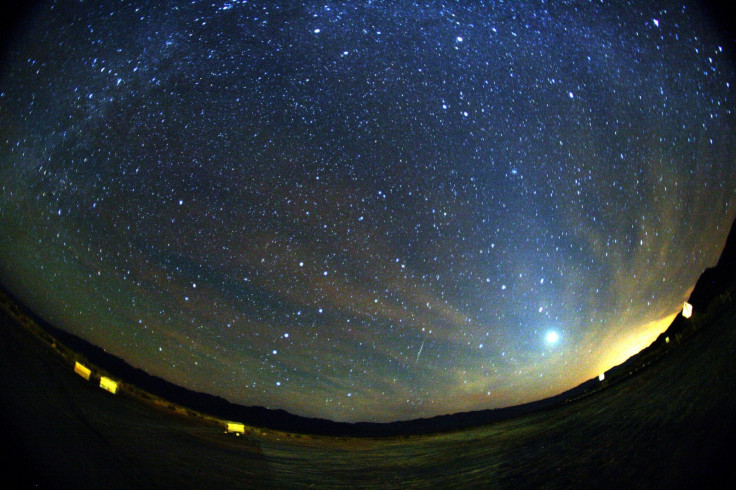When and where to watch the Orionid meteor shower
This year's shower expected to be disappointing with just 15-20 meteors per hour.

The Orionid meteor shower will peak on 21 and 22 October, with shooting stars visible in both the northern and southern hemispheres. This year's shower is expected to be less spectacular than normal, with around 15-20 meteors per hour. On good years, stargazers can see up to 80 per hour.
The Orionids is one of two meteor showers from Halley's Comet. It happens when Earth passes through the debris from the tail of the comet – the only comet clearly visible to the naked eye from Earth.
Meteors seen during the shower are tiny bits of ice and dust that came off the comet and collide with our atmosphere. When they hit, they disintegrate and burn up, creating the flash of light seen in the sky.
The best time to look out for comets from the Orionid meteor shower is after midnight, when the planet turns into the debris field. Meteors should be visible up until the early hours of the morning – its peak. Ideally, people should get away from cities to view – light pollution makes it harder to see meteors.
While Nasa notes the peak days are 21 and 22 October, activity can be seen up until 4 November.
Find out where to watch the meteor shower in the UK and US below.
Where is the best place to see a meteor in Britain?
London: The WaterWorks Nature Reserve in east London is a spot less affected by light pollution – a rarity in the capital. You can get there via Clapton and Leyton Midland Rd stations.
Birmingham: Warley Woods is west of the city centre and can be reached via the A456 Hagley Road.
Manchester: Heaton Park is the largest park in Greater Manchester. It is accessible by tram or bus from the city centre, or via the M60 motorway.
Glasgow: The Mugdock Country Park can be reached by bus from the city centre.
Cardiff: The Brecon Beacons Dark Sky Reserve was the first destination in Wales to be granted special protection as an international dark sky reserve.
Belfast: Oxford Island National Nature Reserve hosted events for the BBC Stargazing Live in 2012 and 2013.
Where is the best place to see a meteor in the US?
Pennsylvania: Cherry Springs State Park is a gold-certified International Dark Sky Park and its night sky viewing area is open 24/7.
California: Death Valley National Park is a gold-certified International Dark Sky Park, with very little artificial light within its 3.4 million acres. Angeles National Forest in Los Angeles County, southern California, is also a good spot.
Philadelphia: The Tuckahoe State Park is two hours out of the city.
Arizona: The Kitt Peak National Observatory, near Tucson, is home to the world's largest collection of optical telescopes. The clear, dark skies of the Sonoran Desert are also a firm favourite with astronomers.
Utah: The night sky at Bryce Canyon is so dark it is possible to see 7,500 stars on a moonless night.
Illinois: The Hickory Knolls Discovery Centre in St Charles is a nature conservatory and a Dark Sky Park.
New Mexico: Chaco Culture National Historical Park is a great location to try and spot the Delta Aquarids.
Texas: The Big Bend National Park in west Texas has gone to some lengths to retain its International Dark Sky status, including by changing the lighting to shielded LEDs.
© Copyright IBTimes 2025. All rights reserved.





















